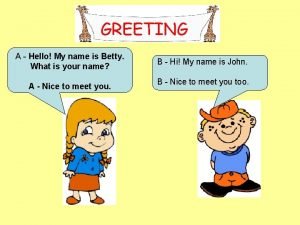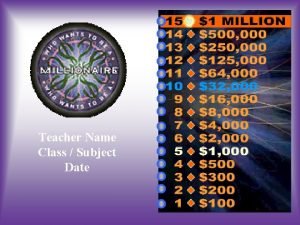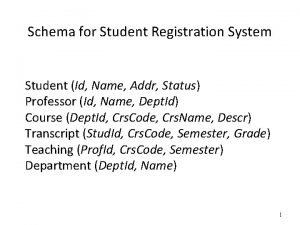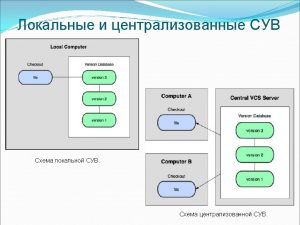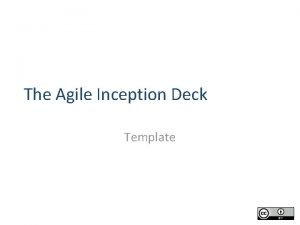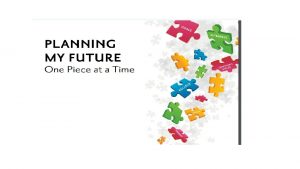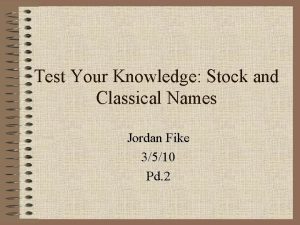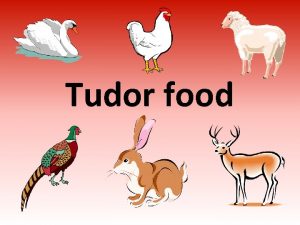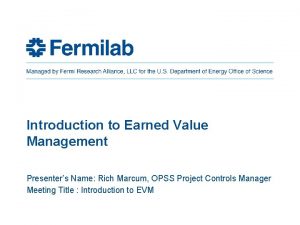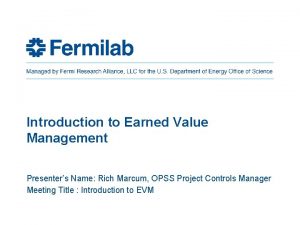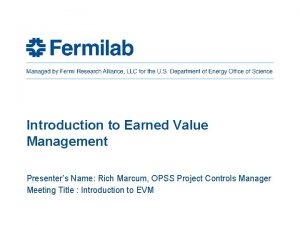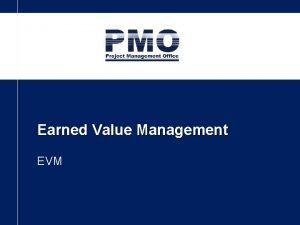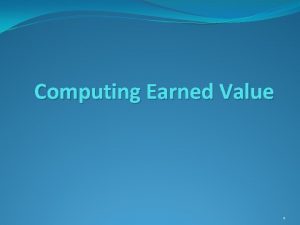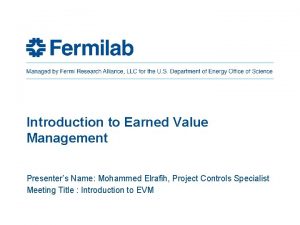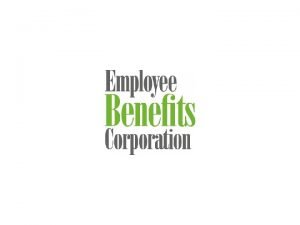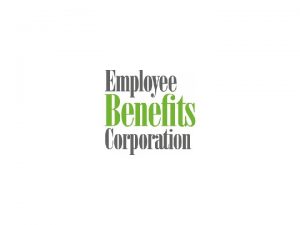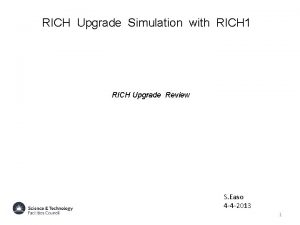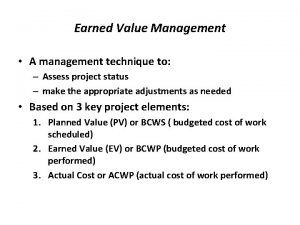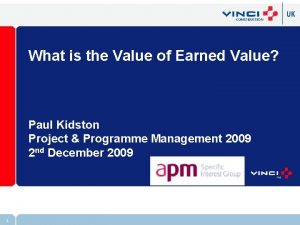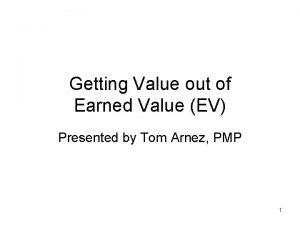Introduction to Earned Value Management Presenters Name Rich














































































- Slides: 78

Introduction to Earned Value Management Presenter’s Name: Rich Marcum, OPSS Project Controls Manager Meeting Title : Introduction to EVM

What we will NOT Learn • A lot of Trivia/History (Utilize the Friday Principle) • How to Plan • How to Schedule • How to Implement • Make Expert EVM Practitioners – Not discuss all aspects/tools – Focused Approach 2 Rich Marcum | Introduction to EVM 11/4/2020

Objectives • Understand Reason for EVM • Basic Understanding of EVMS – – – – EVMS vs Traditional Cost Management Earning Value (Progress Reporting) EVM Terminology EVM Indicators/Calculations EVM Principles EVM Practices EVM Responsibilities • Practical Application of EVMS at FNAL 3 Rich Marcum | Introduction to EVM 11/4/2020

Why EVMS • Required by DOE and other Government agencies to Obtain Funding for Projects – DOE Order 413 -B “Establish, maintain and execute the EVMS Certification and Surveillance Review processes in accordance with established levels and in coordination with the PMSO to ensure full compliance with applicable ANSI, FAR and OMB requirements. ” - Office of Management and Budget (OMB) Circular A-11, Part 7: “All major acquisitions with development effort will include the requirement for the contractor to use an Earned Value Management System (EVMS) that meets the guidelines in ANSI/EIA Standard – 748 to monitor contract performance. ” • Allow Lab to get funding for future projects – Show we can manage a project – Demonstrate to stakeholders we are responsible agents of their trust – Establish/build Trust – Requirement for CD 2 & CD 3 (certified) 4 Rich Marcum | Introduction to EVM 11/4/2020

Why EVMS – Bit of History • Some Contractors look at Government Contracts as “Cash Cows” without regard for Cost Over-runs and Schedule Adherence. • Other’s Demonstrated Inability to meet Cost and Schedule Constraints. Scope (Work) Cost Schedule (Time) • 1960 Do. D Introduces fore runners • 1980 to 90 evolved to simplified EVM under the direction of Undersecretary of Defense for Acquisition • 1991 Canceled $57 B Work based on EVM • 1998 Establishment of ANSI 748 • 2005 -11 Revisions to FAR standards emphasizing need for EVMS 5 Rich Marcum | Introduction to EVM 11/4/2020

Traditional Cost Management Evaluation Process • Compares a projects planned-to-date costs to its actual-todate costs Planned Costs - Actual Costs = Underrun or Overrun • Positive value indicates an underrun • Suggests a healthy project • Expectation the project will be completed under-budget • Negative value indicates an overrun • Suggests performance issues • Expectation the project will be completed over-budget 6 Rich Marcum | Introduction to EVM 11/4/2020

Example: Traditional Cost Management • Example indicates a performance underrun: $500 K - $400 K = $100 K 7 Rich Marcum | Introduction to EVM 11/4/2020

Earned Value Process • New component not found in traditional evaluation process – Earned Value • Measure of work actually performed • % Complete x Budget at Completion = Earned Value • Comparing Earned Value to other components derives variances • • 8 Earned Value - Actual = Cost Variance Earned Value - Planned Value = Schedule Variance Positive variances indicate healthy performance Negative variances indicate performance issues Rich Marcum | Introduction to EVM 11/4/2020

Example: Earned Value Process • Cost and schedule variances used to calculate and determine a project's forecast 9 Rich Marcum | Introduction to EVM 11/4/2020

EVMS Official Definition An Earned Value Management System (EVMS) is the overall methodology that organizations use to plan, manage, control, and analyze the cost and schedule performance of projects. It encompasses organizational policies, business processes, automation support, standards, and accountability for results. ANSI-EIA Standard 748 10 Rich Marcum | Introduction to EVM 11/4/2020

Earning Value (Performance Reporting) Ø Earned Value falls into 2 main categories: • Non-discrete (aka management tasks - LOE) • Discrete (specific deliverable) Ø Level of Effort is an example of non-discrete EV methods Ø Guidance for LOE Activities • Keep LOE to Minimum less than 15 -19% • Control Account Cost • Project Cost • Don’t mix LOE and Discrete Work • Separate CTCs • Separate Reports • Ensure LOE i. e. You Can’t Measure Progress 11 Rich Marcum | Introduction to EVM 11/4/2020

Earned Value Methods Ø Examples of discrete EV methods: • • • 0/100 (performance is earned after all work is complete) 100/0 (performance is earned at the start of the work) 50/50 (50% earned at start; 50% earned at finish) Physical % complete (incremental earning based on PMs assessment of %) Units complete Milestones (30% design, 60% design, etc. ) Ø Remember, the method you choose must be objective and consistent throughout the project 12 Rich Marcum | Developing the Schedule 11/4/2020

EVM Fundamental Standard • Industry-wide standard for EVMS – ANSI 748 • Organized into five categories containing 32 Criteria o Organization - 5 criteria o Planning, Scheduling, and Budgeting 10 criteria o Accounting Considerations - 6 criteria o Analysis and Management Reports - 6 criteria o Revisions and Data Maintenance - 5 criteria 13 Rich Marcum | Introduction to EVM 11/4/2020

Break – 5 Min. 14 Rich Marcum | Introduction to EVM 11/4/2020

EVM Cat 1 – Organization (GL 1 -5) 1. 2. 3. 4. 5. 15 Define Work Scope (WBS) Define Project Organization (OBS) Integrate Processes Identify Overhead Management Integrate WBS/OBS to Create Control Accounts Rich Marcum | Introduction to EVM 11/4/2020

EVM Cat 2 – Planning, Scheduling, and Budgeting (GL 6 -15) 6. Schedule with Network Logic 7. Set Measurement Indicators 8. Establish Budgets for Authorized Work 9. Budget by Cost Elements 10. Create Work Packages, Planning Packages 16 Rich Marcum | Introduction to EVM 11/4/2020

EVM Cat 2 – Planning, Scheduling, and Budgeting (GL 6 -16) 11. Sum Detail Budgets to Control Account 12. LOE Planning and Control 13. Establish Overhead Budgets 14. Identify Management Reserve and Undistributed Budget 15. Reconcile to Target Cost Goal 17 Rich Marcum | Introduction to EVM 11/4/2020

EVM Cat 3 – Accounting Considerations (GL 16 -21) 16. Record Direct Costs 17. Summarize Direct Costs by WBS Elements 18. Summarize Direct Costs by OBS Elements 19. Record/Allocate Indirect Costs 20. Identify Unit and Lot Costs 21. Track and Report Material Costs and Quantities 18 Rich Marcum | Introduction to EVM 11/4/2020

EVM Cat 4 – Analysis and Management Reports (GL 22 -27) 22. Calculate Schedule Variance and Cost Variance 23. Identify Significant Variances for Analysis 24. Analyze Indirect Cost Variances 25. Summarize Information for Management 26. Implement Corrective Actions 27. Revise Estimate at Completion (EAC) 19 Rich Marcum | Introduction to EVM 11/4/2020

EVM Cat 5 – Revisions and Data Maintenance (GL 28 -32) 28. Incorporate Changes in a Timely Manner 29. Reconcile Current to Prior Budgets 30. Control Retroactive Changes 31. Prevent Unauthorized Revisions 32. Document PMB Changes 20 Rich Marcum | Introduction to EVM 11/4/2020

Earned Value Management System EVMS is not a software product or tool, but rather a collection of management practices used to: • Plan all work scope • Breakdown work scope into finite pieces • Assign Work to a responsible person or organization • Integrate the work scope, cost, and schedule - Performance Measurement Baseline (PMB) • Routinely access project's progress and actual costs • Perform Corrective Actions • Forecast Project Completion • Report with Transparency 21 Rich Marcum | Introduction to EVM Scope (Work) Cost 11/4/2020 Schedule (Time)

Earned Value Management System - Simplified Earned Value Management System Management Processes (How) 22 Rich Marcum | Introduction to EVM Management Information System (What) Management of People (Who) 11/4/2020

What is FNAL Certified EVMS • DOE 413 - Projects must have EVMS certified and periodically audited • FNAL Procedures (System) • • • 23 Project WBS, OBS, RAM Control Accounts, Work Packages, Planning Packages Work Authorization Project Scheduling Cost Estimating Monthly Status Reporting Change Control EVMS Surveillance & Maintenance EVMS Description Rich Marcum | Introduction to EVM 11/4/2020

FNAL EVMS Procedures (System) http: //www. fnal. gov/directorate/OPMO/Pol. Proc/home. htm • Project WBS, OBS, RAM • Control Accounts, Work Packages, Planning Packages • Work Authorization • Project Scheduling • Cost Estimating • Monthly Status Reporting • Change Control • EVMS Surveillance & Maintenance • EVMS Description 24 Rich Marcum | Introduction to EVM 11/4/2020

FNAL EVMS Certified Process is found in Procedures EVMS Procedures Answer: • Who • Why • When • How CAMs need to: • Know • Use • Reference 25 Rich Marcum | Introduction to EVM 11/4/2020

FNAL OPSS Share. Point Guidance EVM 1 Hr. Training 26 Rich Marcum | Introduction to EVM 11/4/2020

FNAL OPSS Share. Point Guidance (Cont. ) EVMS Information 27 Rich Marcum | Introduction to EVM 11/4/2020

FNAL OPSS Share. Point Guidance (Cont. ) EVMS Surveillance Reviewer Materials 28 Rich Marcum | Introduction to EVM 11/4/2020

Lunch Break – 20 Min. 29 Rich Marcum | Introduction to EVM 11/4/2020

Earned Value Management Is • A Standardized approach to assessing progress • Predictive is estimating where a project’s costs and schedules are heading • Diagnostic in locating where the problems are • Proactive by signaling the need for corrective actions • Strategic in identifying the problems and opportunities across multiple elements of a project 30 Rich Marcum | Introduction to EVM 11/4/2020

Terminology • Components necessary for determining and analyzing earned value performance: – Planned Value - cost of work that was planned to be accomplished • • Plan Budget BCWS - Budgeted Cost of Work Scheduled Science Related Terminology – Target or Theory – Earned Value - calculated cost of work that was accomplished • BCWP - Budgeted Cost of Work Performed • Science Related Terminology – Results or Outcome – Actual Value - actual amount it cost to perform the work • Actuals • Incurred • ACWP - Actual Cost of Work Performed 31 Rich Marcum | Introduction to EVM 11/4/2020

Other EVM Terminology • Progress • Percentage of physical work completed • Also referred to as Percent Complete • Earned Value Method • • Methods used for progressing control accounts/work packages Selected to produce the best objective results Also called Performance Measurement Technique (PMT) Rules of Credit • Progress Weighting • Applied to schedule Activities to more accurately calculate a control account's progress 32 Rich Marcum | Introduction to EVM 11/4/2020

More EVM Terminology • Budget at Completion (BAC) • Total planned cost for the project • Variance • Deviation from the Baseline (planned) cost or schedule • Positive Variances are Favorable • Negative Variances are Unfavorable • Control Account (CA) • Lowest WBS element assigned to a single focal point to plan and control scope / schedule / budget 33 Rich Marcum | Introduction to EVM 11/4/2020

More EVM Terminology • Performance Measurement Baseline (PMB) • Integrates Scope, Schedule, Cost, Resources, Technical Milestones • Project time-phased budget plan • Used to benchmark cost and schedule performance of project • Total Project Cost (TPC) • Total Cost of Performing Project’s Scope of Work from inception to close. 34 Rich Marcum | Introduction to EVM 11/4/2020

35 Rich Marcum | Introduction to EVM 11/4/2020

EVM Indicator Calculations • Earned Value • Cost of work accomplished • Earned Value = BAC x Percent Complete • Variances • Cost Variance = Earned Value – Actuals • Schedule Variance = Earned Value - Planned Value 36 Rich Marcum | Introduction to EVM 11/4/2020

EVM Indicator Calculations (Continued) • Estimate to Complete (ETC) • Independent EAC (i. EAC) • Also called Forecast • Remaining cost to complete project • ETC = EAC - Actuals • Calculation for determining the EAC • i. EAC = BAC / CPIcuml • Total forecasted cost of project • EAC = Actuals + ETC • Value of work that has to be completed for every dollar spent to complete the project within budget • TCPI = (BAC - EVcuml) / (EAC - Actualscuml) • To-Complete Performance • Estimate at Completion (EAC) Index (TCPI) • Variance at Completion (VAC) • Total Cost Variance at completion of the project • VAC = BAC + EAC 37 Rich Marcum | Introduction to EVM 11/4/2020

EVM Index • Variances in terms of a ratio • Cost Performance Index = Earned Value / Actuals • CPI of 0. 80 indicates for every dollar spent to accomplish work, 80¢ of work was completed • Schedule Performance Index = Earned Value / Planned Value • SPI of 1. 2 indicates for every dollar of work scheduled to be accomplished, $1. 20 of work was completed • Values above 1. 0 indicate good performance • Values below 1. 0 indicate poor performance 38 Rich Marcum | Introduction to EVM 11/4/2020

Easy Indication Calculation P S SV = 1500 SPI =. 7 39 Rich Marcum | Introduction to EVM A S = 5000 P = 3500 A = 4000 SV=P-S SPI=P/ S CV = -500 CPI =. 875 CV=P-A CPI=P/ A 11/4/2020

Earned Value Management’s Key Concepts “Plan the Work and then Work the Plan” “That which gets measured, gets done. ” Unknown Tom Peters “If you aim for nothing, you will hit it every time. ” Shaun Sherrick Plan 40 Rich Marcum | Introduction to EVM Measure Compare Estimate 11/4/2020

Break – 5 Min. 41 Rich Marcum | Introduction to EVM 11/4/2020

EVM Principles • • • 42 Organize Plan Authorize Execute Monitor Control Rich Marcum | Introduction to EVM Control Monitor Execute Authorize Plan Organize 11/4/2020

EVM Practices • Organize • Define Project Objectives by establishing KPIs & Milestones • Define Project Plans such as Project Execution Plan (PEP) • Define Project work scope via Work Breakdown Structure (WBS) • Define Project Organization via Organization Breakdown Structure (OBS) • Assign Responsibility via Responsibility Assignment Matrix (RAM) 43 Rich Marcum | Introduction to EVM • Plan • Delivery/Product Based Outcome • Schedule • Control Accounts • Work Packages • Planning Packages • • Anticipate Risks/Obstacles Estimate (Budget) Review/Revise Performance Measurement Baseline (PMB) 11/4/2020

EVM Practices (Cont. ) • Authorize • • • 44 Discrete Controllable Level Work Scope Budget Limits Timeline (Schedule) Work Authorization Document (WAD) Rich Marcum | Introduction to EVM • Execute • • Work the Plan Authorized Scope Only Actual Cost Report Progress • Objective • Quantifiable • PMT 11/4/2020

Work Authorization Document 45 Rich Marcum | Introduction to EVM 10/10/2014

Example of RAM 46 Rich Marcum | Introduction to EVM 10/10/2014

EVM Practices (Cont. ) • Monitor • Measure • Cost • Schedule • Performance • Analyze • Deviations/Variances • Forecast via EAC • Report • Control • • • Evaluate Direct Maintain History Scope Creep Maintain Change Logs Maintain Change Documents • Various levels • CA Required • Maintain Corrective Action Logs • Maintain Risk Registers 47 Rich Marcum | Introduction to EVM 11/4/2020

What Does EVMS Measure? § Performance (BCWP – Results) § Budget (BCWS – Target) § Actuals (ACWP – Cost) 48 Rich Marcum | Introduction to EVM S P A 11/4/2020

Using EVMS Helps Answers Questions • • • 49 When will the project be completed? What is the likely final cost of the project? Is the project on budget? Will the project finish on time? What is the cause for delays? What is the cause for over-runs? Rich Marcum | Introduction to EVM 11/4/2020

Applying EVMS Guidelines to the Project Phases 1. 2. 3. 4. 5. 6. 7. 8. 9. 10. 11. 12. 13. 14. 15. 16. 17. 18. 19. 20. 21. 22. 23. 24. 25. 26. 27. 28. 29. 30. 31. 32. 50 Rich Marcum | Introduction to EVM Define Work Scope (WBS) Define Project Organization (OBS) Integrate Processes Identify Overhead Management Integrate WBS/OBS to Create Control Accounts Schedule with Network Logic Set Measurement Indicators Establish Budgets for Authorized Work Budget by Cost Elements Create Work Packages, Planning Packages Sum Detail Budgets to Control Account LOE Planning and Control Establish Overhead Budgets Identify Management Reserve and Undistributed Budget Reconcile to Target Cost Goal Record Direct Costs Summarize Direct Costs by WBS Elements Summarize Direct Costs by OBS Elements Record/Allocate Indirect Costs Identify Unit and Lot Costs Track and Report Material Costs and Quantities Calculate Schedule Variance and Cost Variance Identify Significant Variances for Analysis Analyze Indirect Cost Variances Summarize Information for Management Implement Corrective Actions Revise Estimate at Completion (EAC) Incorporate Changes in a Timely Manner Reconcile Current to Prior Budgets Control Retroactive Changes Prevent Unauthorized Revisions Document PMB Changes 11/4/2020

DOE Project CD Process 51 Rich Marcum | Introduction to EVM 11/4/2020

Questions: • • What is EVMS? How is EVMS different than Traditional Cost Management? What are the Principles of EVMS? What are the General Practices of EVMS? What can you Learn about your Project using EVMS? What are some of the Indicators used by EVMS? When should you apply EVMS Practices/Principles in your Project? • Which EVMS Practices/Principles are not applicable to your project? 52 Rich Marcum | Introduction to EVM 11/4/2020

When to Apply EVMS to the Project CD Process 1. Define Work Scope (WBS) 2. Define Project Organization (OBS) 3. Integrate Processes 4. Identify Overhead Management 5. Integrate WBS/OBS to Create Control Accounts 6. Schedule with Network Logic 7. Set Measurement Indicators 8. Establish Budgets for Authorized Work 9. Budget by Cost Elements 10. Create Work Packages, Planning Packages 11. Sum Detail Budgets to Control Account 12. LOE Planning and Control 13. Establish Overhead Budgets 14. Identify Management Reserve and Undistributed Budget 15. Reconcile to Target Cost Goal 16. Record Direct Costs 17. Summarize Direct Costs by WBS Elements 18. Summarize Direct Costs by OBS Elements 19. Record/Allocate Indirect Costs 20. Identify Unit and Lot Costs 21. Track and Report Material Costs and Quantities 22. Calculate Schedule Variance and Cost Variance 23. Identify Significant Variances for Analysis 24. Analyze Indirect Cost Variances 53 Rich Marcum | Introduction to EVM 25. 26. 27. 28. 29. 30. 31. 32. Summarize Information for Management Implement Corrective Actions Revise Estimate at Completion (EAC) Incorporate Changes in a Timely Manner Reconcile Current to Prior Budgets Control Retroactive Changes Prevent Unauthorized Revisions Document PMB Changes EVMS is applicable to all CD Phases Require Certified Process at CD-2/3 11/4/2020

Applying EVMS to Project prior to CD 2/3 • • Remember EVMS is a Management tool Don’t Disregard EVMS or other Management Standards Should be applied to All Projects and in All Phases Strict Certified Compliant applications of EVMS are Required at CD 2 and CD 3 phases • Apply EVMS Judiciously to Prevent Overburdening Project during rapidly changing Scope Defining and R&D Cycles • Prior to CD 2/3 Tailored approach can be used 54 Rich Marcum | Introduction to EVM 11/4/2020

EVMS Tailoring (DOE guidance) 55 Rich Marcum | Introduction to EVM 11/4/2020

EVMS Tailoring What does it Mean to FNAL • • Schedule Durations are not limited to 40 days Higher level of LOE activities are acceptable Estimates less strict i. e. more ROMs are acceptable Resources can be loaded at higher level Cobra Costing Tools is not required Change Logs can be less detailed P 6 Coding rules are less restrictive if not using Cobra Processes can be less proscriptive Remember: Project must be Compliant to EVMS Certified System Six (6) months prior to DOE CD 2 review: • 3 Months prior to CD 2 Director’s review • 1 Month for changes per Director’s review • 3 Months data prior to CD 2 DOE review 56 Rich Marcum | Introduction to EVM 11/4/2020

EVMS Graphs 57 Rich Marcum | Introduction to EVM 11/4/2020

Roles and Responsibilities (Basic) • Project Manager (PM) – – Getting Results (Work done, on Time, within Cost Limits) Reporting Project Progress Control Risk Etc. • Control Account Manager (CAM) – Working as authorized by PM – Work Authorization – All aspects of PM Responsibilities - lower level – EVM rubber meets road • Project Controls – Support – Guide – Train 58 Rich Marcum | Introduction to EVM 11/4/2020

EVMS Responsibility seen from 40, 000 Feet RESPONSIBILITY BUDGET ELEMENT Total Project Cost CUSTOMER Contingency Management Reserve PROJECT MANAGER Performance Measurement Baseline / Budget at Completion Undistributed Budget Control Accounts CONTROL ACCOUNT MANAGER Work Packages 59 Rich Marcum | Introduction to EVM Planning Packages 11/4/2020

Practical Application of EVMS at FNAL Build an EVMS Compliant Project 60 Rich Marcum | Introduction to EVM 11/4/2020

Break – 5 Min. 61 Rich Marcum | Introduction to EVM 11/4/2020

Cost Estimate Classifications 62 Rich Marcum | Introduction to EVM 11/4/2020

Estimate Types / Uncertainty for M&S 63 Rich Marcum | Introduction to EVM 11/4/2020

Estimate Types / Uncertainty for Labor 64 Rich Marcum | Introduction to EVM 11/4/2020

Estimate Types / Uncertainty for Conventional Facilities 65 Rich Marcum | Introduction to EVM 11/4/2020

Steps in Preparing a Schedule 1. 2. 3. 4. 5. 66 6. Develop project activity list and milestones at lowest WBS level Sequence project activities and milestones Determine relationships between activities and milestones Establish activity durations Assign Earned Value or Performance Measurement Technique (PMT) and Other Appropriate Coding Determine resources for each activity 7. 8. 9. 10. 11. Assign single point of responsibility Assess resource allocations Identify critical set of activities Evaluate achievability Determine project duration Rich Marcum | Introduction to EVM 11/4/2020

Step 1 – Develop activities and milestones • Ø 67 Step 1 - Develop a list of project activities and milestones using the WBS as a framework WBS Activity ID Activity Description 1. 1 M 1010 Project Management 1. 1 T 1020 Test Planning 1. 1. 1. 2 P 1030 Perform Testing 1. 1. 1. 2 Q 1040 QA During Testing 1. 1. 1. 3 R 1050 Reporting Caution of smart activity IDs • Activity ID – limited intelligence – “M” for “Management” activities, etc • Extra keystrokes when coding could be used • Numerical sequence may only work for one sort • It’s only a reference number – make it easy on everyone Rich Marcum | Developing the Schedule 11/4/2020

Step 2 – Sequence Activities List Ø “Sequence” or develop “logical” flow between activities Ø Get other involved – PMs, CAMs, SME, PCS, etc. Ø It’s not “your” schedule……. PROJECT schedule Pour Foundation 1. 01. 01 Excavate footings & foundation 68 Place footing & foundation forms Rich Marcum | Developing the Schedule Pour footings & foundation Cure footings & foundation Remove footing & foundation forms Backfill & compact excavation 11/4/2020

Step 3 – Determine Relationships (Cont. ) Pour Concrete SS Excavate footings & foundation FS Place footing & foundation forms Lag’s, avoid them…this would be better represented by Concrete Cure activity. 69 Rich Marcum | Developing the Schedule FS Pour footings & foundation FS Cure footings & foundation SS (1) Lag time Remove footing & foundation forms FS 11/4/2020 Backfill & compact excavation

Step 4 – Establish Activity Durations Ø Enlist help of those who will perform the work Ø Determine work periods needed to complete each activity Ø Type of schedule can determine durations – Pre-CD 2/3 Longer Durations – Pre-CD 2/3 Higher Level Activities Ø General guide for durations (CD 2/3) – Except for milestones – 1 -4 days too short – 1 week to 2 months ideal (5 to 40 days) – Except for LOE over 3 months too long – Discrete tasks able to progress on monthly basis Ø Utilize fiscal year bars for LOE activities 70 Rich Marcum | Developing the Schedule 11/4/2020

Schedule Traceability: Vertical & Horizontal Sum ma ry S che FN AL du le V ert ica l Tr ace abi lity Ø Vertical traceability ensures the client, project, control account, work packages schedules are in sync Ø Horizontal traceability ensures interdependencies between control accounts and work packages are accounted for 71 Rich Marcum | Refine & Evaluate the Schedule 11/4/2020

Schedule – Think Performance Ø Cause of Schedule Variance – Optimistic Start – Pessimistic Finish Ø Verify timelines account for Ramp-up Ø Verify Timelines account for Ramp-Down 72 Rich Marcum | Refine & Evaluate the Schedule 11/4/2020

Monthly Reporting: Cost Performance Report Example 73 Rich Marcum | Introduction to EVM 11/4/2020

Variance Analysis Thresholds (Default) Changed by Exception • Project Requirements • FRA Management • Risk • Project Requirements • Budget • FRA Management • Reflected in PMP 74 Rich Marcum | Introduction to EVM 11/4/2020

Old - Variance Analysis Report Example 75 Rich Marcum | Introduction to EVM 11/4/2020

New - Variance Analysis Report Example 76 Rich Marcum | Introduction to EVM 11/4/2020

Objectives • Understand Reason for EVM • Basic Understanding of EVMS – – – – EVMS vs Traditional Cost Management Earning Value (Progress Reporting) EVM Terminology EVM Indicators/Calculations EVM Principles EVM Practices EVM Responsibilities • Practical Application of EVMS at FNAL 77 Rich Marcum | Introduction to EVM 11/4/2020

78 Rich Marcum | Introduction to EVM 11/4/2020
 Presenters names
Presenters names Presenter name
Presenter name Presenter's name
Presenter's name Job title example
Job title example Name/title of presenter
Name/title of presenter Ndia evms intent guide
Ndia evms intent guide Earned value analysis in ms project
Earned value analysis in ms project Earned value management tutorial module 7
Earned value management tutorial module 7 Ndia evms application guide
Ndia evms application guide Earned value management tutorial
Earned value management tutorial Gold card evm
Gold card evm Evms gold card
Evms gold card Earned value management example
Earned value management example Evm gold card
Evm gold card Earned value management gold card
Earned value management gold card Ariba implementation at med-x
Ariba implementation at med-x Trendanalyse vorgehensweise
Trendanalyse vorgehensweise Earned value added
Earned value added Ev gold card
Ev gold card Penciptaan nilai adalah
Penciptaan nilai adalah Atv presenters
Atv presenters Michael henderson monash
Michael henderson monash Thank you to all presenters
Thank you to all presenters Calender presenters
Calender presenters Famous british tv presenters
Famous british tv presenters Earned schedule calculation
Earned schedule calculation Name a line containing point a
Name a line containing point a Tips earned by a server in a fashionable restaurant
Tips earned by a server in a fashionable restaurant I=prt formula
I=prt formula Respect is to be earned not demanded
Respect is to be earned not demanded Parallelism definition rhetoric
Parallelism definition rhetoric Times-interest-earned ratio
Times-interest-earned ratio Horizontal analysis example
Horizontal analysis example Cash realization ratio
Cash realization ratio Fees earned journal entry
Fees earned journal entry Prepositional poem example
Prepositional poem example Dr cr balance sheet
Dr cr balance sheet Fees earned debit or credit
Fees earned debit or credit Adjusting accounts for financial statements chapter 3
Adjusting accounts for financial statements chapter 3 Jaxon earned $39 raking leaves
Jaxon earned $39 raking leaves A student has earned the following scores
A student has earned the following scores Times interest earned ratio
Times interest earned ratio The buddhist religion teaches that salvation is earned by
The buddhist religion teaches that salvation is earned by Valrox
Valrox P value equation
P value equation D value and z value
D value and z value Acid value principle
Acid value principle Future value of $1
Future value of $1 Relative value vs absolute value
Relative value vs absolute value What is the value of what is the value of
What is the value of what is the value of Expected value
Expected value Examples of anthropocentrism
Examples of anthropocentrism Capturing value from customers
Capturing value from customers Sheet name = cell value
Sheet name = cell value Pyramid levels of management
Pyramid levels of management Management pyramid
Management pyramid Basic concepts of management
Basic concepts of management Introduction to valuation the time value of money
Introduction to valuation the time value of money Understanding value education
Understanding value education Authors last name first name initial
Authors last name first name initial Name above every other name
Name above every other name Squares name
Squares name![Private string[] Private string[]](data:image/svg+xml,%3Csvg%20xmlns=%22http://www.w3.org/2000/svg%22%20viewBox=%220%200%20200%20200%22%3E%3C/svg%3E) Private string[]
Private string[] Her name
Her name Name of presentation company name
Name of presentation company name Name of presentation company name
Name of presentation company name Name teachers name class date
Name teachers name class date Hello my name is betty
Hello my name is betty Your name what's your name
Your name what's your name Name teacher class date
Name teacher class date Student id name department name
Student id name department name Git global username
Git global username Lecturer's name
Lecturer's name Agile inception
Agile inception Name class teacher date
Name class teacher date First name last name tpu
First name last name tpu Stock and classical names of elements
Stock and classical names of elements Tudor food menu
Tudor food menu Poor tudor food pictures
Poor tudor food pictures


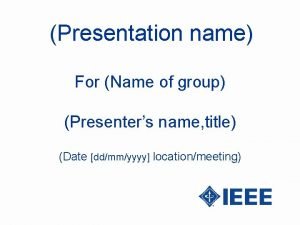

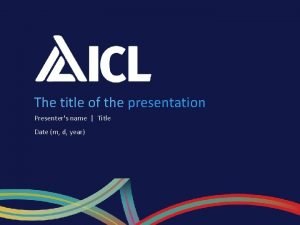
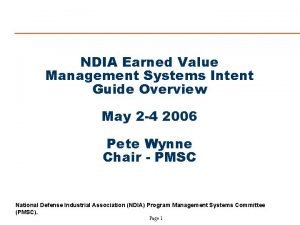
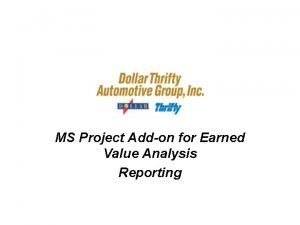
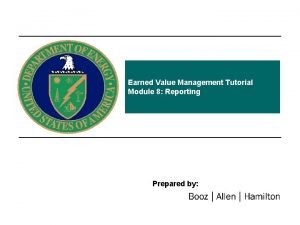




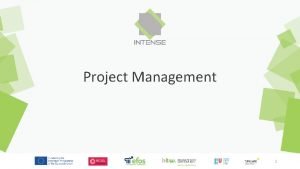

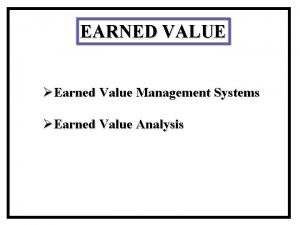
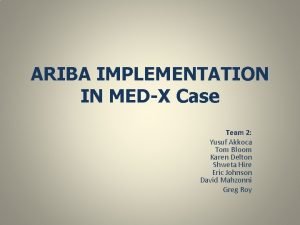
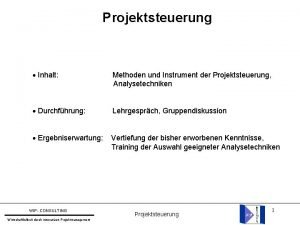
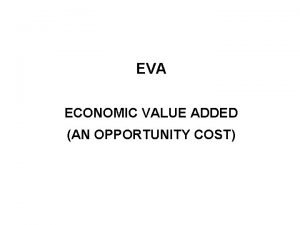


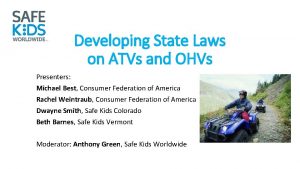
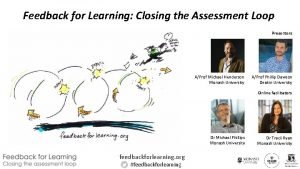

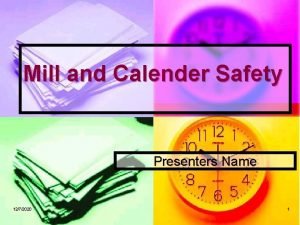

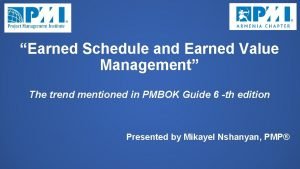

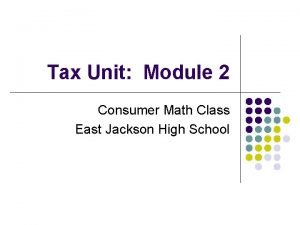
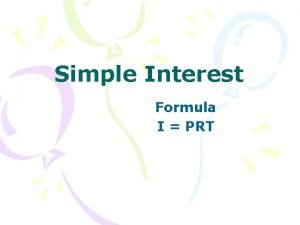

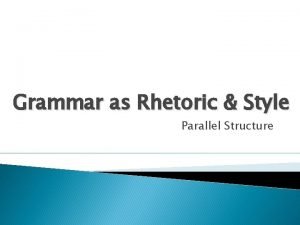
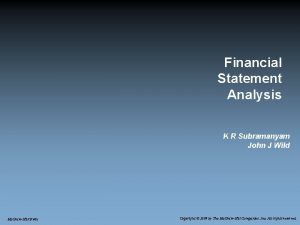
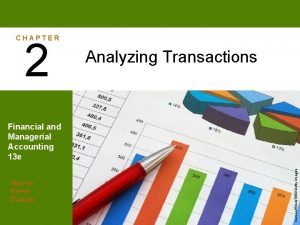
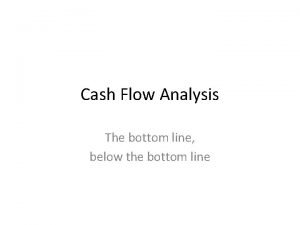
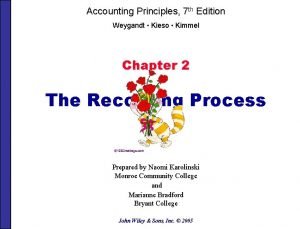


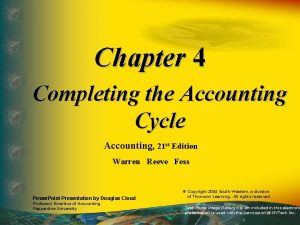

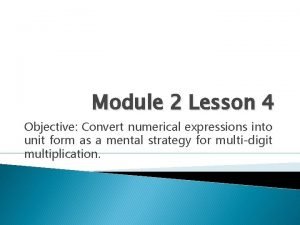
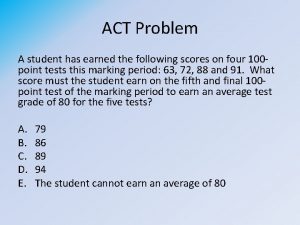
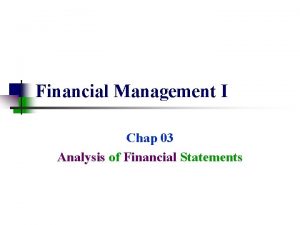
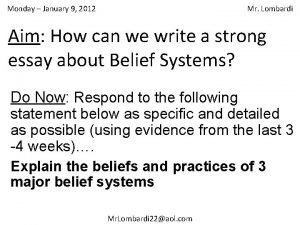
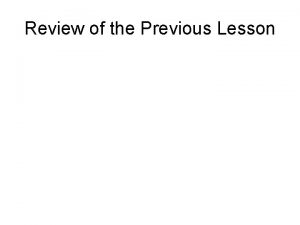
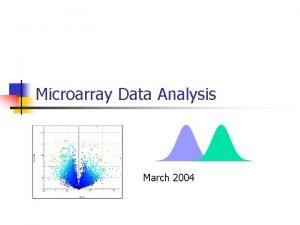
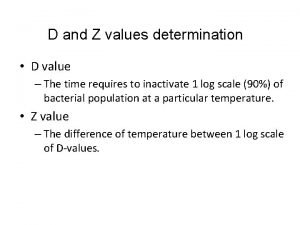

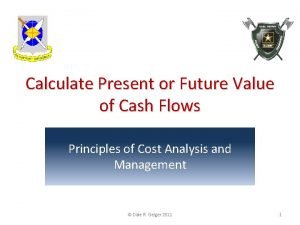

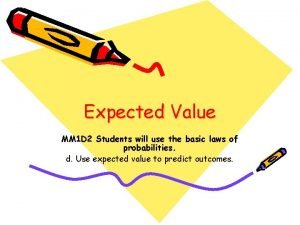
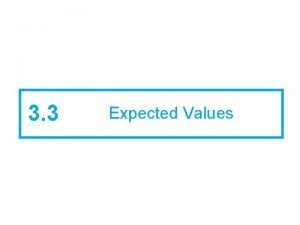


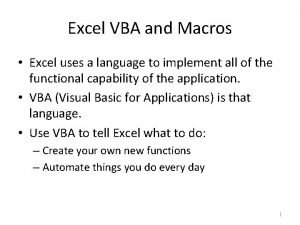



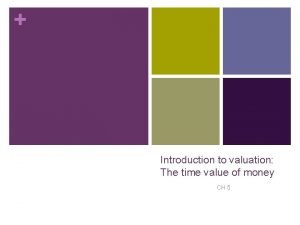
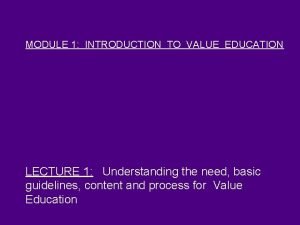
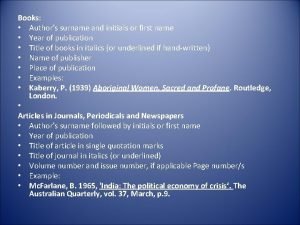

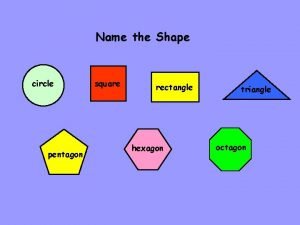
![Private string[] Private string[]](https://slidetodoc.com/wp-content/uploads/2020/12/3088144_f6d6e306d8f29e1538b2c0f548f94d87-300x225.jpg)




